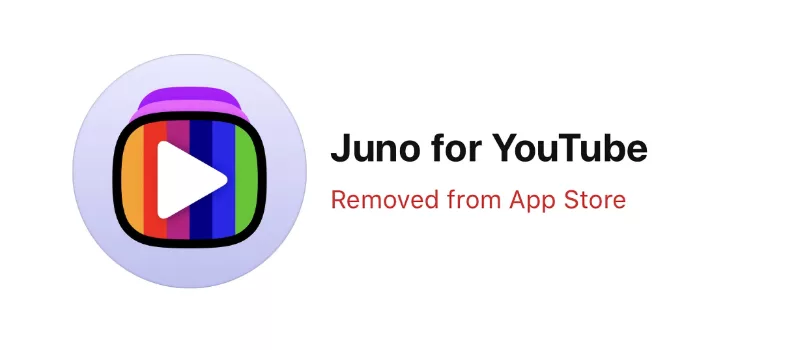Juno is unofficial apps versus leading tech companies once again. Juno, a third-party YouTube app from Christian Selig, has just been removed from the App Store. Created on Apple’s much-vaunted Vision Pro, Juno was supposed to fill in the hole Google provided when it did not offer an official YouTube app for Apple’s virtual reality headset. The removal of the app by Google brings up some concerns about how under strict policies, third-party applications can work while leaving users in limbo.
The Rise and Fall of Juno
Junos’ journey began earlier this year when an opportunity was spotted by Christian Selig. It was promised by Google, but there was still no official YouTube app for the Vision Pro. The only way users could access YouTube was through Safari, which would play videos in Apple’s default video player-an experience that did not capitalize on the immersive potential of virtual reality. Juno sought to change that.
The astonishing features Juno offered included 360- and 180-degree video, leveraging the power of Apple’s Vision Pro for an immersive view; one could scrub through content with pinch-and-drag gestures and even play back the content with Siri. Juno didn’t block ads. In fact, by Selig’s own admission, it acted like a web-wrapper for YouTube, similar to a browser extension.
This was when Google attorneys initially contacted him in April 2024 to claim Juno violated YouTube’s API and trademark policies, to which he insisted his creation didn’t use it. However, Google said it strongly alluded to its trademarks. The dispute ended with Juno’s removal from the App Store-with no way for Vision Pro users to enjoy YouTube’s content in virtual reality.
The Fight Over YouTube on Vision Pro
The real problem here is that Google itself never published an official YouTube app for the Vision Pro. The search giant hinted back in February that a YouTube app was “on the roadmap” for Vision Pro, but it has yet to appear. It’s this vacuum from Google that opened the door to third-party apps like Juno, hoping to round out the VR experience for users.
Then he made several attempts to satisfy Google’s demands: even taking down YouTube’s logo from Juno’s homepage and from the description of the app, clearly labelling it as unofficial. Still, Google did not give way.
Selig says, “Juno is just a web view, and acts as little more than a browser extension that modifies CSS to make the website and video player look more ‘visionOS-like.'” Even so, Google still insisted that Juno was in breach of its terms of service. After months of back-and-forth, an email arrived from Apple confirming Juno’s removal from the App Store.
For now, Juno will still work for those who already have the app installed, unless they delete the app or until such time as YouTube pushes an update that could disable the app altogether. For new Vision Pro owners, there isn’t even a comparable alternative to Juno since no other YouTube apps offer virtual reality that comes close.
Juno’s removal is a big blow for the users of Apple Vision Pro, who, until now, relied on third-party apps to access YouTube content in virtual reality. Whereas watching YouTube videos is still possible through Safari, the absence of such an immersive app leaves much desired. The official YouTube VR app has been long available on Oculus and other VR devices, but on Vision Pro, that has to wait.
What’s Next for Vision Pro Users?
Now, the interesting thing here is that Juno has been pulled at a time when YouTube VR is finding great traction at a time when VR and 360-degree content had already started to become commonplace across other platforms. With the growing user base of the Vision Pro, Google is under more pressure than ever to finally deliver the long-promised YouTube app for Vision Pro.
While Juno was far from perfect, its removal points out the problems third-party developers have when they try to make apps for platforms ruled by major corporations. Selig won’t fight the removal of Juno-most likely not wanting to go through all that again as he did in court with Reddit over the Apollo application. The whole controversy has brought up the need for better communication and more support for developers.

Final Thoughts: Will Google Deliver?
But until that time comes, one is just going to have to sit back and hope Mountain View makes good on its promise of an officially developed YouTube app on Apple’s revolutionary headset. Until then, Juno’s departure creates a noticeable gap in the Vision Pro’s app ecosystem.
Get all further updates on this and learn more about Vision Pro and YouTube’s VR capabilities by checking out Apple’s Vision Pro and Google’s official VR apps.
More News: Tech News


